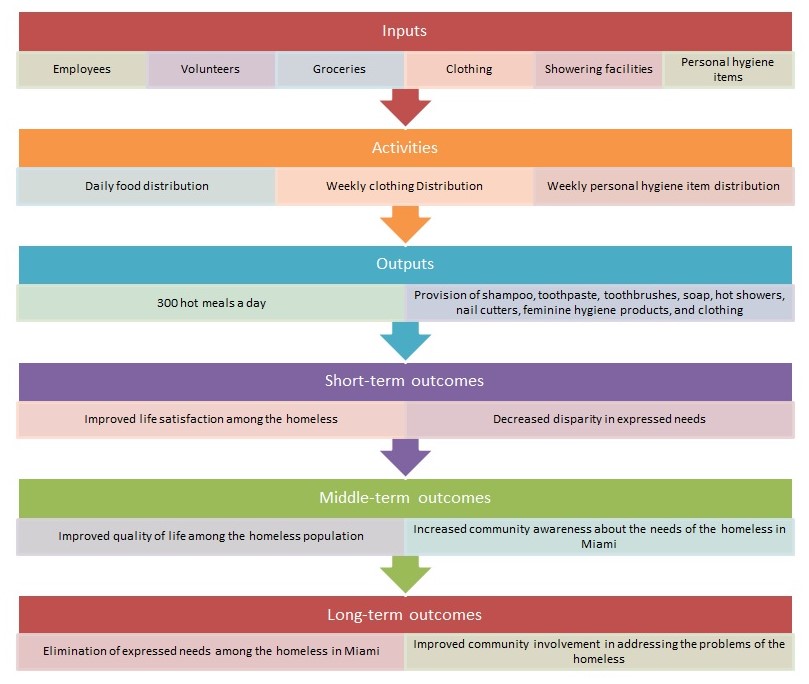The present artifact is a logic model developed for a program that aims at addressing the problem of food insecurity among homeless people in Miami. The goals of the program were to ensure nutrition stability, provide a sufficient amount of personal hygiene items, allow on-demand access to showering facilities, and ensure that all the homeless have appropriate clothing for the season. The logic model helps to conceptualize and visualize the program’s theory. According to Savaya and Waysman (2005), a graphical representation of the theory is vital for successful program execution and evaluation, as it improves the ability of all stakeholders to understand its essence.
The logic model serves as a roadmap for all stakeholders that helps to grasp the essentials of the program in a concise form. The logic model helps to look beyond the activities that lead to short-term outcomes. The model provides the stakeholders with the opportunity to realize how inputs contribute to the achievement of long-term goals. When preparing the logic model, I learned to break down an idea of service into small constituencies to evaluate all parts of the project.

The development of the artifact helped me become more aware of the needs of special populations. I also realized how human service professionals could make a change with scarce resources and commitment. This understanding contributed to my overall idea of the inclusion of diverse populations.
Works Cited
Savaya, R., & Waysman, M. (2005). The logic model. Administration in Social Work, 29(2), 85–103.